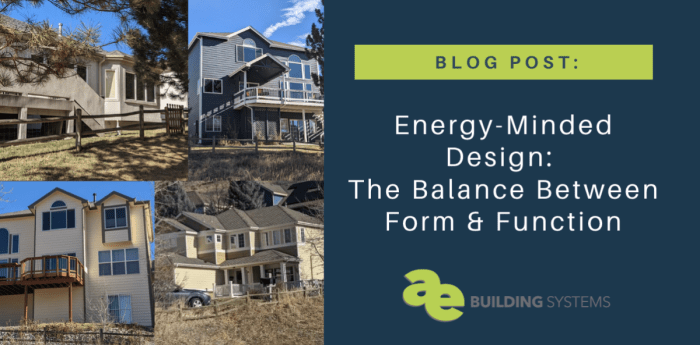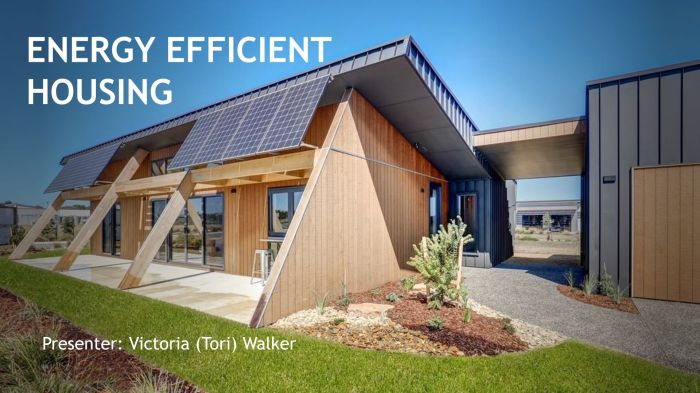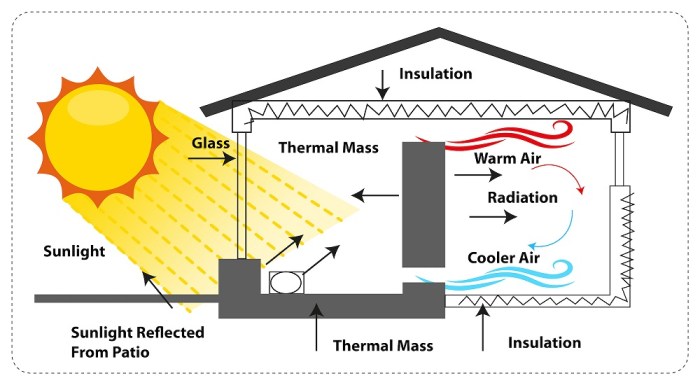With Energy-efficient exterior design at the forefront, this paragraph opens a window to an amazing start and intrigue, inviting readers to embark on a storytelling journey filled with unexpected twists and insights. From the importance of sustainable materials to the impact on utility costs, this topic delves into the key elements that shape energy-efficient buildings.
Exploring the innovative technologies and sustainable materials that drive energy efficiency, this discussion sheds light on the future of eco-friendly architecture.
Importance of Energy-Efficient Exterior Design

Energy-efficient exterior design plays a crucial role in reducing energy consumption, lowering utility costs, and minimizing the environmental impact of buildings. By implementing sustainable materials and techniques, structures can be designed to operate more efficiently and responsibly.
Materials and Techniques for Energy Efficiency
- Insulated Concrete Forms (ICFs): ICFs provide excellent insulation, reducing heating and cooling needs.
- High-performance windows: Energy-efficient windows with low-E coatings and double or triple glazing minimize heat transfer.
- Solar panels: Harnessing solar energy can significantly reduce electricity bills and reliance on non-renewable resources.
- Cool roofs: Reflective roofing materials help maintain lower indoor temperatures, reducing the need for air conditioning.
Impact on Utility Costs and Environmental Footprint
Energy-efficient exterior design leads to decreased energy consumption, resulting in lower utility bills for building owners. Additionally, by using sustainable materials and practices, the environmental footprint of buildings is reduced, contributing to a healthier planet.
Key Elements of Energy-Efficient Exterior Design

Properly designing the exterior of a building plays a crucial role in ensuring energy efficiency. Key elements such as insulation, windows, and landscaping can significantly impact the overall energy consumption of a structure.
Insulation
Insulation is a fundamental component of energy-efficient exterior design. It helps regulate the temperature inside the building by preventing heat transfer through walls, floors, and ceilings. Proper insulation can reduce the need for heating and cooling systems, ultimately lowering energy costs.
- High-quality insulation materials such as fiberglass, foam, or cellulose can effectively minimize heat loss in the winter and heat gain in the summer.
- Ensuring that insulation is properly installed and sealed is essential to maximize its effectiveness and energy-saving benefits.
Windows, Energy-efficient exterior design
Window placement and design are critical factors in energy-efficient exterior design. Properly positioned windows can optimize natural light exposure while minimizing heat gain, reducing the reliance on artificial lighting and cooling systems.
Notice Front porch decoration ideas for recommendations and other broad suggestions.
- Energy-efficient windows with low-E coatings and multiple panes help insulate the building and reduce heat transfer.
- Strategic placement of windows to capture natural light can enhance indoor lighting levels, reducing the need for artificial lighting during the day.
Landscaping
Landscaping also plays a significant role in energy-efficient exterior design. Trees, shrubs, and other vegetation can provide shade, reduce heat absorption, and create natural insulation barriers, contributing to overall energy savings.
- Strategically planting trees around the building can help block direct sunlight, reducing cooling needs during hot months.
- Green roofs and walls can improve insulation, absorb rainwater, and reduce the urban heat island effect, further enhancing energy efficiency.
Innovative Technologies for Energy-Efficient Exterior Design

When it comes to energy-efficient exterior design, incorporating innovative technologies can significantly enhance sustainability and reduce energy consumption. Modern solutions like solar panels and green roofs are revolutionizing the way we approach building design to create more environmentally friendly structures.
Solar Panels for Renewable Energy Generation
Solar panels have become a popular choice for generating renewable energy in buildings. By harnessing the power of the sun, solar panels convert sunlight into electricity, providing a clean and sustainable energy source. This not only reduces reliance on traditional fossil fuels but also helps lower energy costs in the long run. The integration of solar panels in building exteriors can contribute to a greener environment and a more sustainable future.
Benefits of Green Roofs in Energy Efficiency and Biodiversity
Green roofs, also known as living roofs or eco-roofs, offer numerous benefits when incorporated into building design. These vegetated roofs help reduce energy consumption by providing natural insulation, keeping buildings cool in the summer and warm in the winter. Additionally, green roofs absorb rainwater, reduce stormwater runoff, and improve air quality by filtering pollutants. Moreover, green roofs promote biodiversity by creating habitats for birds, insects, and plants in urban environments.
By integrating green roofs into exterior design, buildings can become more sustainable, environmentally friendly, and aesthetically pleasing.
Sustainable Materials for Energy-Efficient Exterior Design
Using sustainable materials in energy-efficient exterior design is a crucial aspect of creating environmentally friendly and efficient buildings. Sustainable materials like recycled wood, bamboo, and recycled metal not only contribute to reducing the carbon footprint but also offer various benefits in terms of energy efficiency and durability.
Recycled Wood
Recycled wood is a popular choice for sustainable exterior design due to its eco-friendly nature. By repurposing old wood from barns, factories, or other structures, the need for new timber is reduced, helping to preserve forests. Recycled wood can be used for siding, decking, and other exterior elements, providing a natural and rustic look to the building while promoting energy efficiency.
Bamboo
Bamboo is another sustainable material that is gaining popularity in exterior design. Known for its rapid growth and renewability, bamboo is a sturdy and durable material that can be used for cladding, fencing, and even roofing. Its natural resistance to pests and moisture makes it an ideal choice for energy-efficient exterior design, offering both aesthetic appeal and environmental benefits.
Recycled Metal
Recycled metal, such as aluminum or steel, is a versatile material that can be used in various exterior design elements like roofing, siding, and gutters. By using recycled metal, the energy required for mining and processing new metal is significantly reduced, making it a sustainable choice for energy-efficient buildings. Recycled metal also offers durability, weather resistance, and a modern aesthetic to the exterior design.